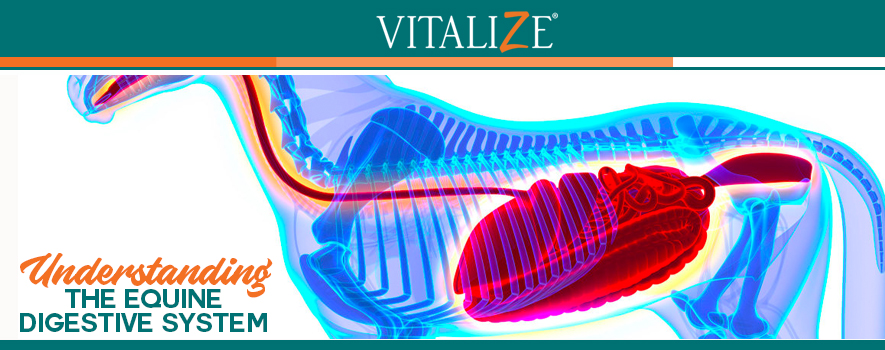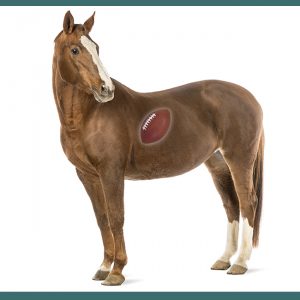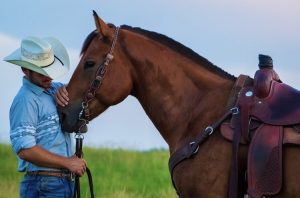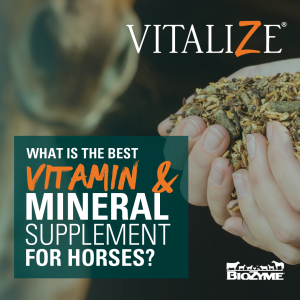The horse’s digestive system can be divided into two main sections – the foregut and the hindgut – both which are specifically designed for the horse to graze for the majority of each day. Let’s take an in-depth look at each portion and their overall role in providing nutrients to the horse.
The Foregut: Stomach and Small Intestine
The foregut comprises approximately 38% of the horse’s digestive tract. It includes the stomach and small intestine. The horse has the smallest stomach in relation to body size of all the domesticated animals today. It is approximately the size of a football and can hold only 2-3 gallons at a time. This design is characteristic of a grazing animal that eats small quantities of food very often. Feed moves through the stomach in approximately 3.5 hours on average. However, this can be expedited to only 15 minutes when large meals are consumed quickly. The faster the feed moves through the system, the less it gets utilized. This is one reason for feeding horses small meals often.
The stomach contains the glandular and non-glandular (squamous) regions. The non-glandular portion is an extension of the esophagus and does not contain any glands. The glandular portion contains glands that secrete enzymes, hydrochloric acid, mucus and other compounds. Moving from the top of the non-glandular portion to the bottom of the glandular portion, the pH lowers, and the environment becomes more acidic. A common ailment in horses is gastric ulceration. Most ulcers occur in the non-glandular portion of the stomach, which does not have the protective mucosal factors like the glandular portion.
From the stomach, feed moves into the small intestine. The small intestine is approximately 70 feet in length and is responsible for absorption for sugars from starch, amino acids from proteins, fatty acids, and the fat-soluble vitamins (A, D and E). The main health concern from the small intestine is infestation by parasites. Parasites can severely compromise the ability of the small intestine to perform its responsibility of absorbing nutrients. Small intestine health can be maintained by using a good deworming program and feeding easily digestible nutrients.
The Hindgut: Cecum and Colon
The hindgut comprises the remaining 62% of the digestive tract. It includes the cecum and colon. The hindgut is primarily responsible for fermenting fibers in the horse’s diet that are unable to be broken down in the foregut. Unlike the enzymatic digestion in the foregut, hindgut digestion occurs by the population of microbes that lives in the hindgut. Through the production of volatile fatty acids (VFAs), the cecum also produces a large amount of the energy that the horse needs to maintain body condition and perform.
The cecum is also often the site of problems that lead to colic in the horse. The cecum can become impacted when partially digested feed gets “stuck”. Keeping the microbes in the hindgut healthy and keeping the horse hydrated can help reduce this type of colic.
In the large colon, some microbial fermentation is continued, and more nutrients are absorbed. The colon is primarily responsible for the absorption of the nutrients released from microbial fermentation as well as the B vitamins, phosphorous and some trace minerals. The last portion of the digestive system before indigestible components begin being prepared for excretion is the small colon. The small colon is responsible for reclaiming water and returning it to the body.
Now that you have a better idea of what makes up the equine digestive system, you can better understand why stressors, like hauling and showing, have such a large impact on the digestive system and how altering their habits do not work in favor of the animal. Since we have changed their habits away from a life of constant grazing, we must be strategic in our management practices to protect their guts from conditions such as colic, ulcers and stress-induced digestive upset.



